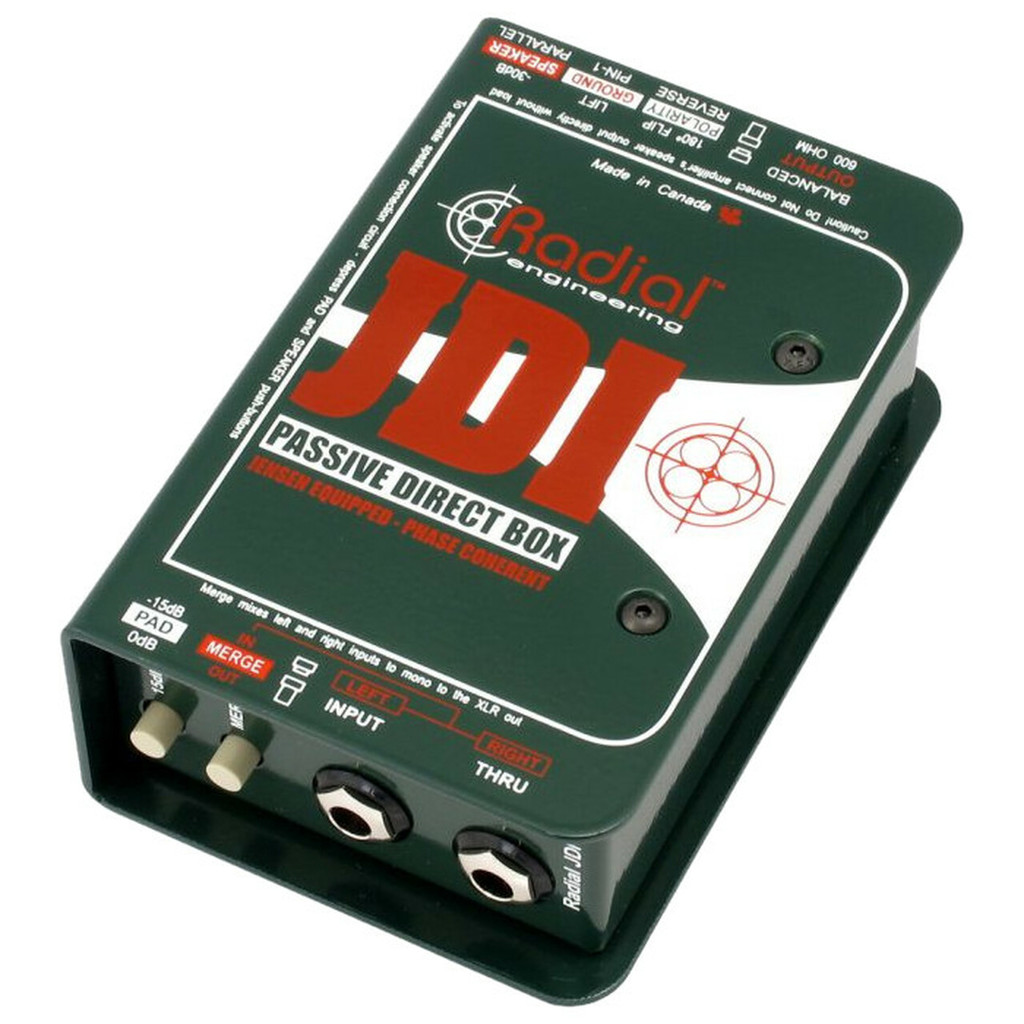- in Book Excerpt , Engineering , Gear , Hardware , Recording by Bobby Owsinski
What To Look For When Buying Your Next Direct Box

Direct boxes are something that we use every day in recording, yet take for granted because of their simplicity. If you’re not familiar with what they do, then you might be tempted to purchase the cheapest one you find, but there’s a real difference in the sound between brands and models. This excerpt from my Recording Engineer’s Handbook looks at the ins and outs of this useful recording tool.
Some DI Background
Direct Injection (DI or “going direct”) of a signal means that a microphone is bypassed, and the instrument (always electric or electrified) is plugged directly into the console or recording device. This was originally done to cut down on the number of mics (and therefore the leakage) used in a tracking session with a lot of instruments playing simultaneously. However, a DI is now used because it either makes the instrument sound better (like in the case of electric keyboards) or is just easier and faster than miking up an amp.
Why can’t you just plug your guitar or keyboard directly into the mic preamp without the direct box? Most preamps now have a separate input dedicated for instruments, but there was a time when that wasn’t the case and plugging an electric guitar (for instance) into an XLR mic input would cause an impedance mismatch that would change the frequency response of the instrument (although it wouldn’t damage anything).
That could cause the high frequencies to drop off and therefore make the instrument sound dull, or the low frequency instruments like basses and analog synths not have enough of that big bottom end we’ve all come to know and love.
Advantages of Direct Injection
There are a number of reasons to use direct injection when recording:
- Direct Box transformers provide ground isolation and allow long cable runs from high impedance sources like guitars and keyboards without excessive bandwidth loss.
- The extremely high impedance of the DI insures a perfect match with almost every kind of pickup to provide a warmer, more natural sound.
- The length of cable can be extended up to 50 feet without signal degradation.
- A well-designed direct box will provide the full frequency response of an instrument.
Direct Box Types
There are two basic types of direct boxes; active (which can provide gain to the audio signal and therefore needs electronics requiring either battery or AC power), or passive (which provides no gain and doesn’t require power). Which is better? Once again, there are good and poor examples of each. Generally speaking, the more you pay the higher quality you get.
An active DI sometimes has enough gain to be able to actually replace the mic amp and connect directly to the line input of your DAW interface, which is nice but may not be exactly what you need.
On the other hand, an excellent DIY passive DI can be built around the fine Jensen transformer specially designed for the task (see www.jensen-transformers.com for do-it-yourself instructions – look for paper ASO66) but you can buy basically the same thing already built from Radial Engineering in their JDI direct box.
Most modern mic pres and computer interfaces now come with a separate DI input on a 1/4” guitar jack, but the sound quality actually might be better using a good direct box instead.
What To Watch Out For
The instrument most often plugged into a DI is the bass, so choosing a direct box that can reproduce those lowest frequencies is critical. That’s why one of the best choices is a DI that uses one of the Jensen transformers mentioned above. It’s a relatively inexpensive way to get that low end without sacrificing much of your pocketbook. This should cost somewhere around $200.
For many bass players and engineers that’s not enough though. They prefer an active DI specialized for the task like the Retrospec Juice Box, Radial High Definition, or A Designs REDDI, but the price is pushing $1,000. This is well worth it if your signal chain is of sufficient quality that it allows you to hear the difference, but is probably overkill for the home studio.
Regardless of the one you pick, make sure that your next direct box can reproduce enough of the bottom to make the purchase worthwhile.
Direct Box Setup
Not much setup is required to use a direct box. For the most part, you just plug the instrument in and play. About the only thing that you might have to set is the gain on an active box (which is usually only a switch that provides a 10 dB boost or so) or the ground switch. Most DI’s have a ground switch to reduce hum in the event of a ground loop between the instrument and the DI. Set it to the quietest position.
You can read more from The Recording Engineer’s Handbook and my other books on the excerpt section of bobbyowsinski.com.

